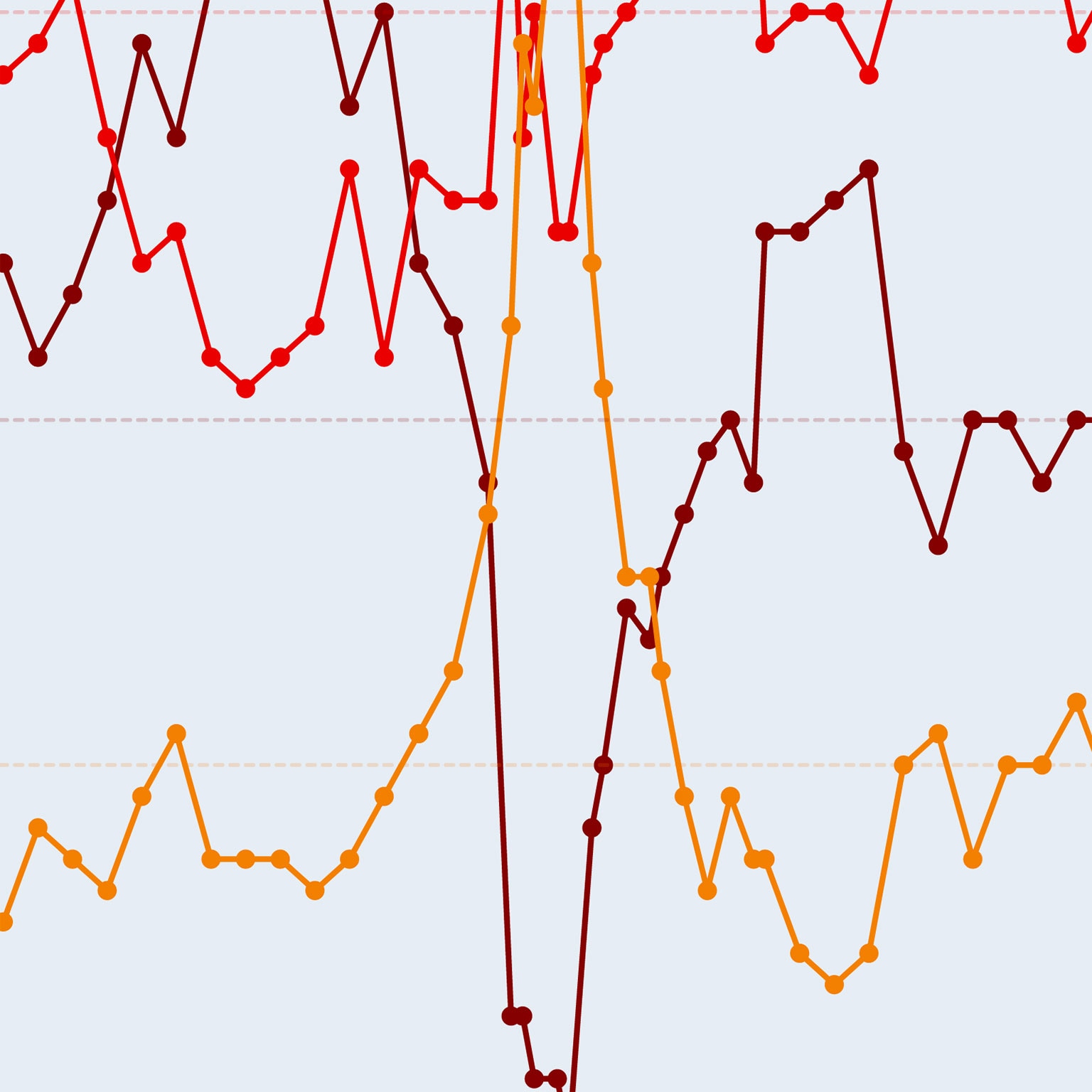In this episode of the McKinsey Podcast, McKinsey Quarterly executive editor Tim Dickson speaks with senior partner Sven Smit about how companies can be more resilient in the face of an impending economic downturn.
Podcast transcript
Simon London: Hello, and welcome to this episode of the McKinsey Podcast, with me, Simon London. Today we’re going to be talking about the next recession. When will it come? How will it come? And importantly, what do we know about managing through a downturn? While we can’t predict the future, we can learn lessons from history: how successful companies have positioned themselves going into a recession and the actions they take during and after the downswing. To talk about all of this, my McKinsey Publishing colleague Tim Dickson caught up in Amsterdam with Sven Smit. Sven is a McKinsey senior partner. He works on strategy across a range of industries and has helped clients navigate the twists and turns of the business cycle. Without further ado, over to Tim.
Tim Dickson: Let’s start with the likelihood of a downturn. What do you think are the chances of a full-blown recession this year?
Sven Smit: Well, clearly, Tim, people are talking a lot about it, and there’s more volatility in some of the broad measures that you could look at. The one thing I will say is that people who say you can predict when it’s going to happen are essentially not truthful because the evidence shows that there are no good predictors. In hindsight, there are some people that said they timed it [the last time].
But I would say you should be very careful about making a prediction. Of course, you should listen to all the different pathways by which people are saying something might happen, because that ups your readiness. And yes, you could say it’s been a long time. So winter will come, and after that, summer will come again. But when winter will come is deeply unpredictable.
Want to subscribe to The McKinsey Podcast?
Tim Dickson: What are the things that people should be looking for? What’s most likely to precipitate a downturn, in your view?
Sven Smit: The pathway of uncertainty and downturns is also very often surprising. So here, again, you could look at a collection of things that might be, and then think there will still be one that’s surprising. I could imagine that we’re going through a very large experiment in monetary policy with quantitative easing that we’re partially unwinding. We’re changing interest rates. How does that work through?
Where will the next bubble sit? Is it a housing market? Is it tech? People will say that the trade stuff that’s happening might have an effect, and yes, that might have an effect. It might be that leverage at the moment is high in certain places, which might then mean that’s tight. And people have been raising a series of pathways, and one of them will—or many of them will, one way or the other—touch this.
Tim Dickson: A lot of people’s benchmark, of course, is the recession of 2008–09. I wonder if you could say how broadly you think the next downturn will be different from that one?
Sven Smit: I would say you can almost with certainty say it’s different, because I can’t recall similar recessions in my 28 years in business.
Tim Dickson: Each one is different?
Sven Smit: They’re all different. And they have different reactions. They hit different sectors. The financial system is always involved somehow. But global downturns start in different places. Some started geographically in Asia. Some started in the bond market. Some started in a mismatch in inflation. And interest pricing. So there are so many places where different recessions have started. The one thing that I feel fairly comfortable saying is this one will be different.
What business leaders can do to prepare
Tim Dickson: With all these uncertainties, at this particular point, at the beginning of 2019, are there some no-regrets moves, things that companies and chief executives can do at this stage before we know how it’s going to play out?
Sven Smit: The simple answer is the healthier your business is today, tomorrow, and the next quarter, the more resilient you will be in a downturn, in the sense that if your costs are lower, you have more buffer to take on stuff. If your balance sheet is not so leveraged, the more capacity you have to take things on and the more capacity you have to invest. That’s one thing.
The second thing is you could at least have some of the prework done; if not already, work it to say, what is the destination investment post crisis or post recession? And have the majority of your investment in that area so that you have good stuff that will be there and accelerate at the moment it moves out.
Tim Dickson: Once a downturn starts, we know from new McKinsey research that the fortunes of major companies varied last time. In particular, a group of resilient organizations dipped less in the downturn and widened their lead in the recovery. What, broadly, did those companies do differently than the rest?
Sven Smit: We found that there were 13 percent of companies that were more resilient. They had real outperformance and total returns to shareholders. Then we looked at what these companies did. They really were already moving a little bit ahead, but only ever so slightly, prerecession. They were already doing some good things. But they created a significant gap through the recovery, and then doubled that gap, or more, post recovery.
When you looked at the revenue profiles of the resilient and non-resilient companies, they were not that different. It is really on the margin side that you see that, way earlier, they showed improvements in margin during the downturn. So during the downturn you literally have the margins improving. The improvement rate dips a little bit, but it’s still going up—while the margin in profile of the non-resilient companies is going down during the downturn, and only one year after, starts to go up. That comes from far more proactive operating cost cutting, which the nonresilient companies postponed to post crisis. The resilient companies also worked hard at leverage, in particular through divestments. They got into a much better cash position that also allowed them to then invest in the future path. That was quite substantial.
Focus on improving productivity and reskilling workers
Tim Dickson: A lot of this is going to require cost cutting, and CEOs are going to be told to cut costs, and there will be lots of advice about how to cut costs. Can you talk about that?
Sven Smit: If you look at cost cutting, there are a few buckets. One is fundamentally improving productivity, which is almost no regrets, and you want to keep on doing that, and invest against it, because that productivity is always going to be good because it means you produce the same outcome with less effort. All that makes total sense to continue to do.
You could have some postponement of investment because you have some uncertainty. But the real issue is not so much the postponing; it’s are you ratcheting it back up fast enough when the recession is done? Often what happens is that people ratchet down, and then they wait too long to bring it back up. That’s where the nuance hits. Postponing is a good way to think about it because when the sky falls from the heavens, and that’s the feeling, I would also pull almost all brakes. But once you know the sky didn’t fall from the heavens, you should put the gas back on. Putting the gas back on is a hard thing.
Then I’ve seen some companies that had, I would say, very good alignment with local and national governments on how to support the labor situation in the downturn. For the government, it’s not great that everybody just gets into the streets. But at the same time, the companies can’t handle all the costs anymore. I’ve seen people who knew that the upturn would be good for them find a solution with governments, to say, you pay half, I pay half, and as a result, the people were not released, but the people were protected one way or the other.
Would you like to learn more about our Strategy & Corporate Finance Practice?
Tim Dickson: It sounds, from what you say, as though CEOs should be mindful about the social consequences of the actions they take in a forthcoming recession.
Sven Smit: We are not living in a Milton Friedman–esque system where if you don’t have demand, you just fire the people and the market will solve what happens to the people. The demand of society to run a business and a government or institutions in a responsible way is only heightened. I think the current tensions that you see in politics are an expression of that in many ways.
I would always consider how you’re dealing with the knock-on effects, how the multitude of stakeholders are part of your journey. This will be different by geography, in terms of the intensity by which this is needed. But it’s also because businesses and institutions have responsibility to people. So it is not only for a downturn. For example, in the advent of digital, many, many companies are retraining their people for future jobs. That might be one way to think about it, is some of the jobs that will be released will be old jobs. That will go a little faster. But you would help these people have the capability for the new jobs, and that might be one way to address the responsibility, is to work on the retraining of the workforce so that what you have is at least a decision to take the people into the future.
Tim Dickson: Nevertheless, there’s the saying, “Don’t let a good crisis go to waste.” I’m sure a lot of CEOs will be mindful of that. Can you think of some examples of what people should be doing following that mantra?
Sven Smit: The best examples are the people who have continued to invest. They continue to invest in pockets of demand that you know are there, whether it’s new energy technologies, new technologies in manufacturing, new semiconductor technologies that you know for which demand will exist. Continued miniaturization of electronics is something for which there is infinite demand. It might just be cyclically gone for a while. It doesn’t make sense to stop the investment in that ongoing research, for example. So one lens is investment.
The second one is seize opportunity. If some other player moves a little oddly in reaction, that’s a time for you to snatch assets, snatch people, and take a proactive stance, which is that a crisis is truly an opportunity.
The other part is you can leverage the mind-set in a company a little bit when a downturn hits. Some things that were frozen organizationally, socially in an organization, you can then get moving because you can use the pressure to get some boxes to move that were frozen.
Thinking through M&A and digital disruption
Tim Dickson: One of the issues that people think about is M&A, obviously, when the recovery comes. But it’s not enough to wait until the recovery comes when thinking about the whole divestiture and acquisition program. Companies need, presumably, to start now. What principles should they bear in mind when thinking about M&A?
Sven Smit: On M&A, there is not that much evidence that people are good at timing. Philosophically, there are people who say, “I have a strategy by which I know what I would want to buy and sell, and I am going to try to time it.” And you have other companies that say, “I buy whatever at that point in market prices, and sometimes I buy high and sometimes I buy low, but I never let something go that’s available.”
The evidence is not that strong that one or the other is better. I could make an argument that the second one, which is a bit more consistent, has the advantage that you’re building a constant capability of integrating. But clearly, there will be particular opportunities that unfreeze in an M&A market because of a downturn. An asset that you’ve been waiting for for 20 years might just have been knocked one way or the other, and that makes it available. Of course, you’re not doing this because it’s cheap, but because it has become available.
Tim Dickson: Can we just switch back to the whole digital-disruption context? Digital is already dividing winners and losers, and I imagine an economic recession is going to exacerbate that even more. How do you see that playing out?
Sven Smit: If you take some sectors that are sensitive to aggregate demand, like retail, which is under significant pressure from online players—they of course are themselves also players online. The switch to online might suddenly get a lot bigger. If you have a business that is challenged by online, and then you get a demand drop, you will have a double drop. And in these areas, I think they will be more exposed. The parts of a business that are sliding because of the digital disruption, they will slide faster. You might expose some things that you don’t see now, because of that additional drop. And so the profit sensitivity might be very big on that side. On the upside, I would say this is a place to continue to invest. The future will include digital. The future will include the online. The differentiating move is to up it in the downturn.

What executives think about the economy: 2004 to now
Tim Dickson: As you go around talking to corporate leaders, what are people saying to you? What actions are people taking, particularly executives who perhaps don’t have long memories, who weren’t there last time?
Sven Smit: I see that most executives are sensitizing their organizations to the idea that something might come, and play through some scenarios, what would we do then to have some heightened readiness and awareness, so that you don’t have to invent the playbook? There are some that don’t do that. But I think it’s very prudent, like some of these executives that I talk to, is to have a playbook for what you do if a downturn happens, with some scenarios on how it might happen, and say, “OK, this is the script that we’re going to work off of. We will modify it based on what really happens.” That playbook is an important point.
One of the things that I’ve learned in either single-company events or these larger recessions where many companies and institutions got under pressure is just how hard a test that is for leaders. If you look at it, the last one was eight years ago. Most CEOs maybe were there when it happened, but they were not CEO. And it is different to be the CEO and trying to figure out what to do in a crisis than to see what the CEO is doing. You don’t know whether your leadership can hold up in a tough time. It’s interesting that in our people systems, in thinking about who is a good leader or not, it’s not a structured item, often, in the HR systems. But you really want to make sure that you not only have the people in the front that can handle it, hopefully, but also if they can’t handle it, that you have a way to back it up quickly.
Plan for the end of the downturn, too
Tim Dickson: Sven, there’s a lot of wisdom and a lot of advice that you’ve given. If I could ask you just to sum up, perhaps, one overriding piece of advice you would give to a CEO at this stage about what lies ahead?
Sven Smit: I think you should do everything possible, when something complicated hits, to stay calibrated. To date, there’s no recession that has lasted—even the big ones—that has lasted longer than one or two years. So good times will come. In the recession, the response is, you go crazy. Cut, cut, cut. Do this, that. And yes, you should be at pace, full on, and all that stuff, but don’t forget that the actions you take toward the future in the recession are as important as the actions that you take to respond to the unique event that will take place. Holding that calibration is very difficult. Profit margins of companies are not that big. So in a recession, it will look very ugly very quickly. Ugly makes you respond with ugly, while the beauty is ahead, or the prosperity is ahead.
Finding that balance, and, as a result, finding ways to have reflective time—I would, for example, maybe say every discussion that I will start in a meeting that is about the recession, let’s remind ourselves that we’re dealing with an event. It’s big, bad, and ugly. But we’re also dealing with the future, which is going to be great. That, to me, is—and there are many, many things you can talk about—but that, to me, is the biggest lens that people should hold to themselves.
Tim Dickson: The prospect of beauty and happiness ahead, that’s a great, optimistic note to end on. Sven, thanks very much, indeed.
Sven Smit: Thank you.


